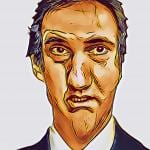
I was very happy as an evangelical Protestant. I underwent a conversion to Christ in 1977 after being very nominal in my Methodist faith as a child and young teenager. I was an apologist on college campuses in the late 80s and had done a lot of street evangelism also. In the late 80s I became involved in Operation Rescue, where we would block the doors of abortion clinics in order to save the lives of babies about to be killed.
In that movement I met many committed, serious Catholics (I never really had, before), and I was most curious about the Catholic prohibition of contraception. I didn’t get that. I wasn’t anti-Catholic, but I thought evangelicalism was sort of the cream of the crop of Christianity, and Catholicism had some things wrong.
In early 1990 I began ecumenical discussions in my home and invited two Catholics I had met. I also met Servant of God Fr. John Hardon, S. J. (a major Catholic author and catechist, and saintly man — canonization), and attended his informal catechetical meetings at the University of Detroit.
After lengthy discussions, I became convinced on the contraception issue (after learning that the Anglicans were the first Christians to change the prohibition, in 1930). I thought Catholicism had the best moral theology of any Christian group.
But my big objection was infallibility, so I fought about that tooth and nail (citing liberal dissidents like Hans Küng and Joseph Döllinger). My friend suggested Cardinal Newman’s Essay on the Development of Christian Doctrine and that pulverized all my objections.
It was his Essay on Development that explained to me how the Catholic Church could be infallible when it taught binding doctrine. Because I loved history, as Newman did, when I read that, it explained in a brilliant way how one could go from the simplicity of the early Church to the complexity of Catholic doctrine as it is today.
The doctrines developed. That was the key to my conversion, because it explained the history of doctrine in a way that was perfectly plausible, and also demonstrated the infallibility of the Church throughout history.
I also studied the Protestant Revolt (or what’s called the “Reformation”) from a Catholic perspective, for the first time. So it was moral theology and history of doctrine that were the main causes.
By October 1990 and many discussions and books read, I was convinced that Catholicism was the fullness of the Christian faith: the Church. [see my conversion story from Surprised by Truth and a lengthier, more technical published version, emphasizing development]
For many other treatments of my conversion, see my web page: Conversion and Converts (Catholic).
***
(originally from 1-17-13)
Photo credit: by Tom McGlynn; with Fr. Hardon and wife Judy on the day I was received (and the day she returned to the Church): 8 February 1991.
***













